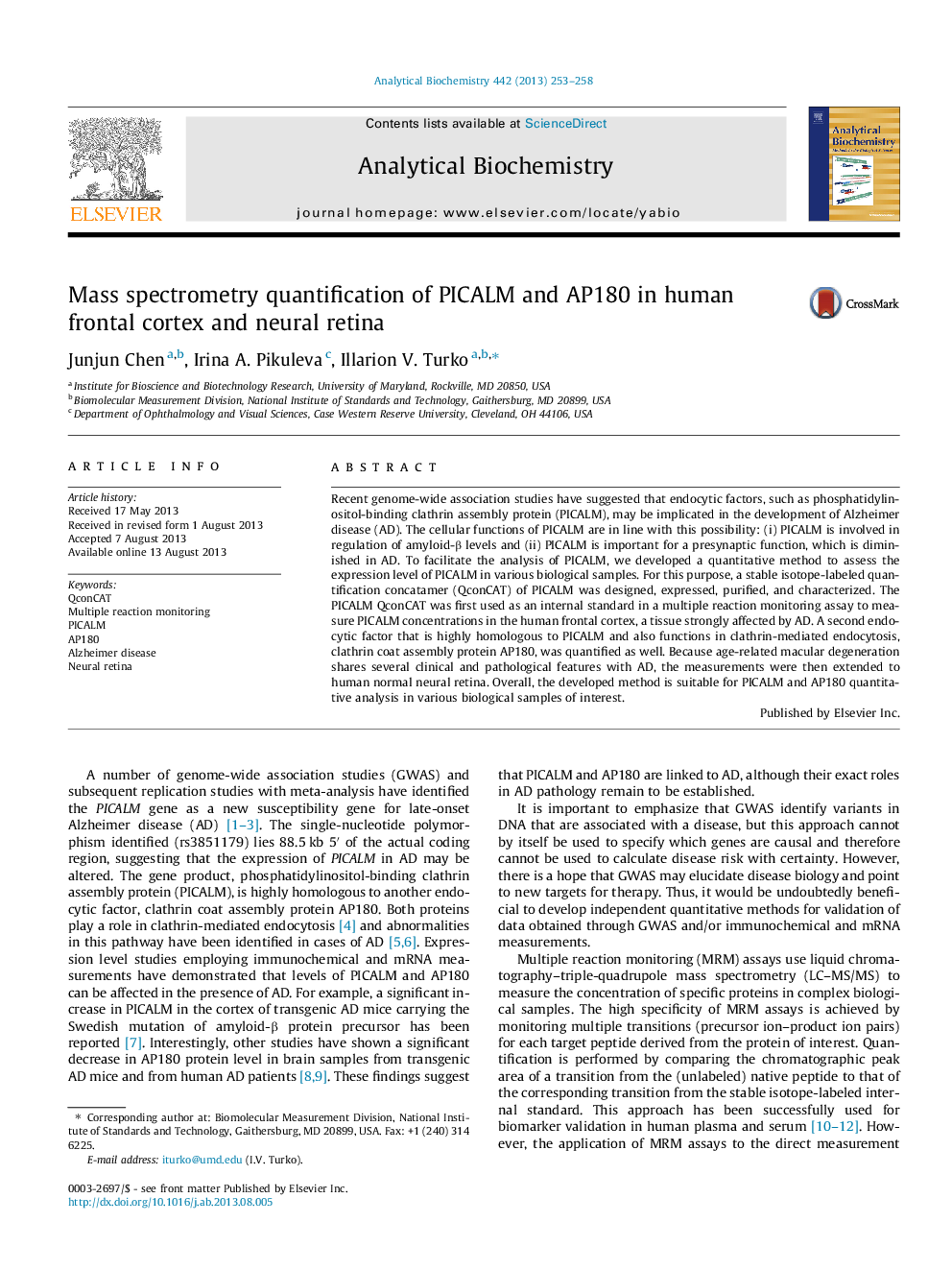| Article ID | Journal | Published Year | Pages | File Type |
|---|---|---|---|---|
| 1173680 | Analytical Biochemistry | 2013 | 6 Pages |
Abstract
Recent genome-wide association studies have suggested that endocytic factors, such as phosphatidylinositol-binding clathrin assembly protein (PICALM), may be implicated in the development of Alzheimer disease (AD). The cellular functions of PICALM are in line with this possibility: (i) PICALM is involved in regulation of amyloid-β levels and (ii) PICALM is important for a presynaptic function, which is diminished in AD. To facilitate the analysis of PICALM, we developed a quantitative method to assess the expression level of PICALM in various biological samples. For this purpose, a stable isotope-labeled quantification concatamer (QconCAT) of PICALM was designed, expressed, purified, and characterized. The PICALM QconCAT was first used as an internal standard in a multiple reaction monitoring assay to measure PICALM concentrations in the human frontal cortex, a tissue strongly affected by AD. A second endocytic factor that is highly homologous to PICALM and also functions in clathrin-mediated endocytosis, clathrin coat assembly protein AP180, was quantified as well. Because age-related macular degeneration shares several clinical and pathological features with AD, the measurements were then extended to human normal neural retina. Overall, the developed method is suitable for PICALM and AP180 quantitative analysis in various biological samples of interest.
Related Topics
Physical Sciences and Engineering
Chemistry
Analytical Chemistry
Authors
Junjun Chen, Irina A. Pikuleva, Illarion V. Turko,
